For a car that helped define what pony cars were all about, the first-generation Chevrolet Camaro got off to something of an ignominious start. As we covered in a story about Bill Mitchell and Irv Rybicki’s interview in the mid-1980s, neither one of these icons of style at General Motors had any particular love for the design eventually became the First Generation Camaro.
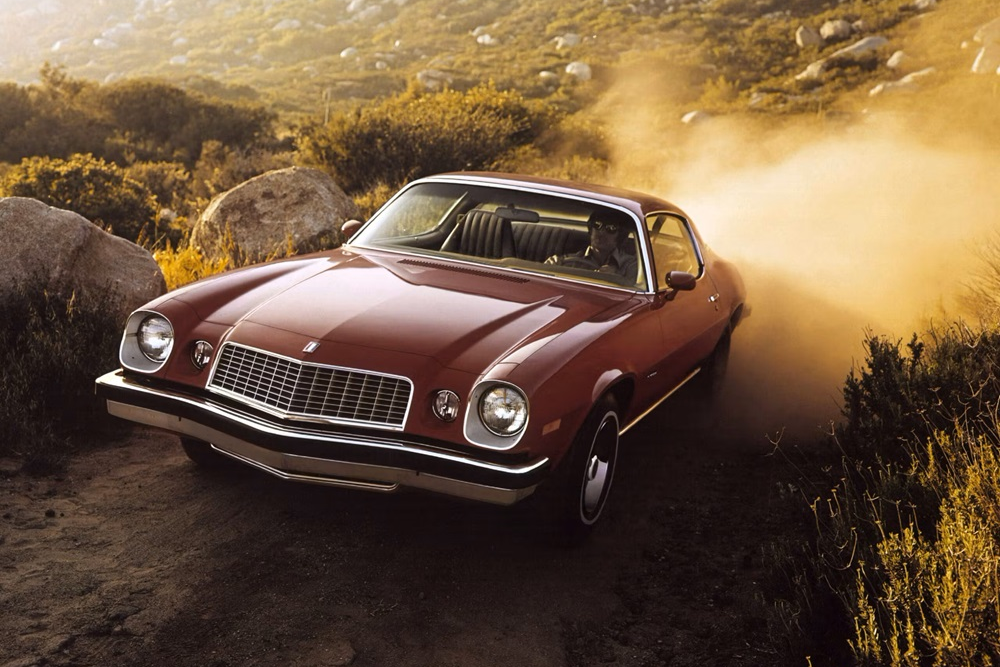
The truly fascinating part of dual interviews that Mitchell and Rybicki gave to the Benson Ford Research Center at the Henry Ford Museum was that the second-generation Camaro, which ran from 1970 to 1981, should’ve been the first generation.
“We did what we were asked to do,” Rybicki said in that interview, regarding the First Generation Camaro. “But when that program was finished, I got with our vehicle packaging group, and we started planning the second-generation car, and there was no interference. We did a new underbody and placed the seats where we wanted them, and got the cross section.”
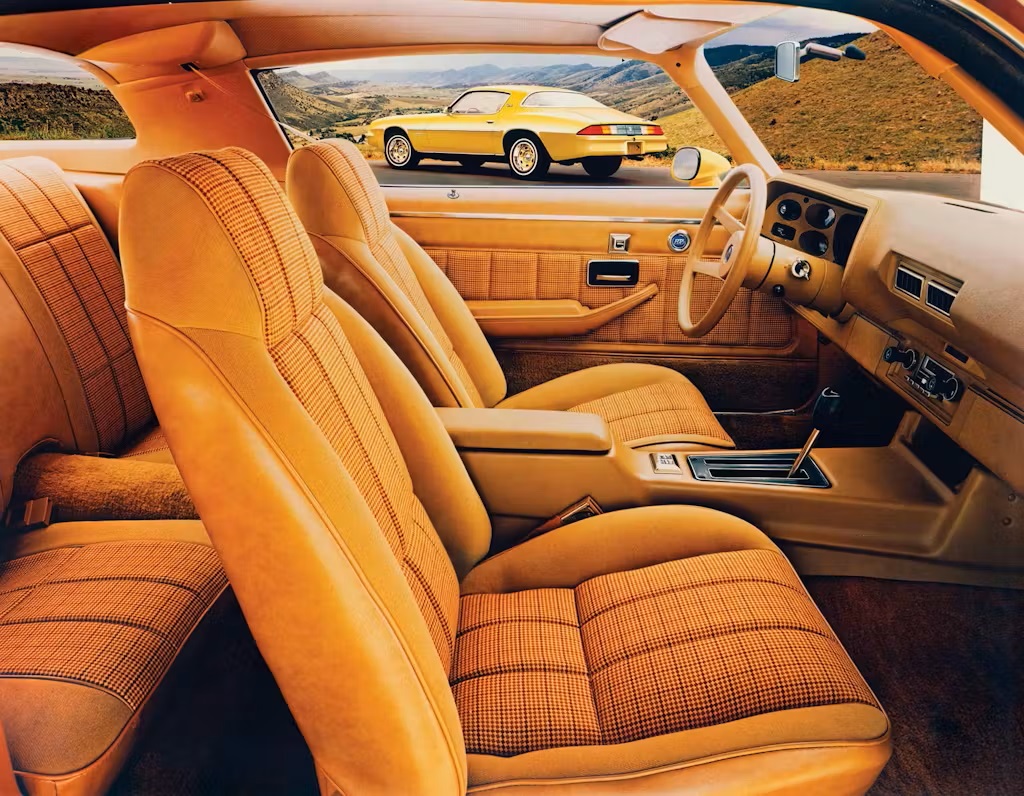
Mitchell echoed Rybicki’s sentiments: “[T]hey ran for ten years, because I got the right dash to axle, the right cowl height,” he said. The look stood the test of time.
So, the 1970 to 1981 Camaro exists as an example of what could’ve been in 1967 had the team had the time to fully execute the ideas that they had about what a personal sports car should be, rather than rushing to grind out cars in an effort to catch up with Ford’s Mustang.

The February 1970 debut of the second-gen Camaro was a clean-sheet design that nonetheless followed a familiar formula designed to meet a broad spread of buyer’s needs: Six-cylinder at the base level with a manual transmission, all the way up to the Z28 at the top of the food chain. (As an aside, the slash disappeared from “Z/28” in 1970, and wouldn’t return till the 2014 Z/28.) The broad range of engines was augmented by the order guide’s flexibility: You could buy the base car with absolutely no frills and a big block V-8 with a four-speed manual, meaning big power could be had without the added cost of stripes, emblems, and wheels that the Z28 offered.
During the second-gen car’s run, the Z28, along with the Type LT and SS, got all the attention, but the real sales numbers came from the low- to mid-trim levels like the Sport Coupe and Berlinetta, which provided basic transportation for Americans all over the country. These two-door sporty coupes were a significant part of what everyday American buyers drove daily before they shifted over to four-door sedans from Toyota and Honda.

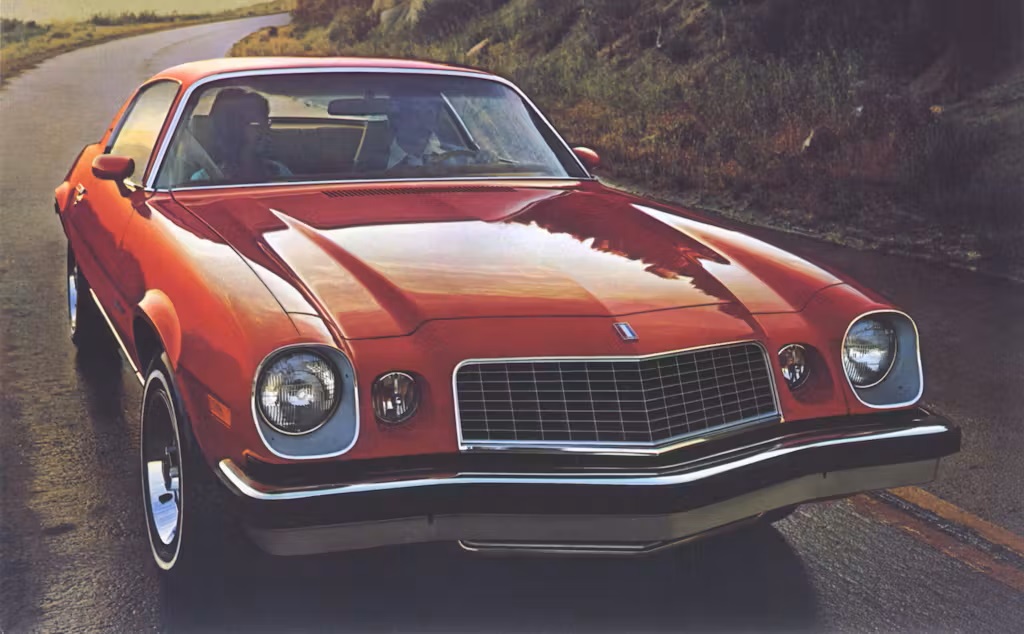
As the years went from 1970 to the mid-1970s, a fuel crisis and perceived ebb in demand for performance cars further encouraged Chevrolet to position the Camaro as more of an everyday vehicle rather than the tire-smoldering drag car or road course dominator it had been in the past. Chevy’s marketing leaned on the universal appeal of a sporty car that actually worked as a daily driver, emphasizing the long doors and easy access to the back seat. “Getting in and out is a snap. Especially in the back,” reads one print ad from 1970. “It’s OK if you have to slip in an occasional shopping bag.”

Especially through a modern lens, with the sixth-gen Camaro selling around 25,000 units a year, the second-generation Camaro was an unqualified smash from the second it arrived. With the exception of 1972 and 1973, when strikes caused production numbers to dwindle, the second-gen Camaro always sold in the six digits. Between the years of 1977 and 1979, Chevrolet sold more than three quarters of a million Camaros. In 1979—when Chevrolet sold 282,571 units—it outsold the Toyota Corolla by about 8,000 cars.
Over 12 model years, the Camaro went from a tire-boiling performance car to a tape-stripe packaged personal coupe and nearly back again as the third generation loomed. That said, in any search for a second-gen car, you’re much more likely to find a Z28 or other performance-oriented model than you are a base coupe with its original six-cylinder engine intact.
1970
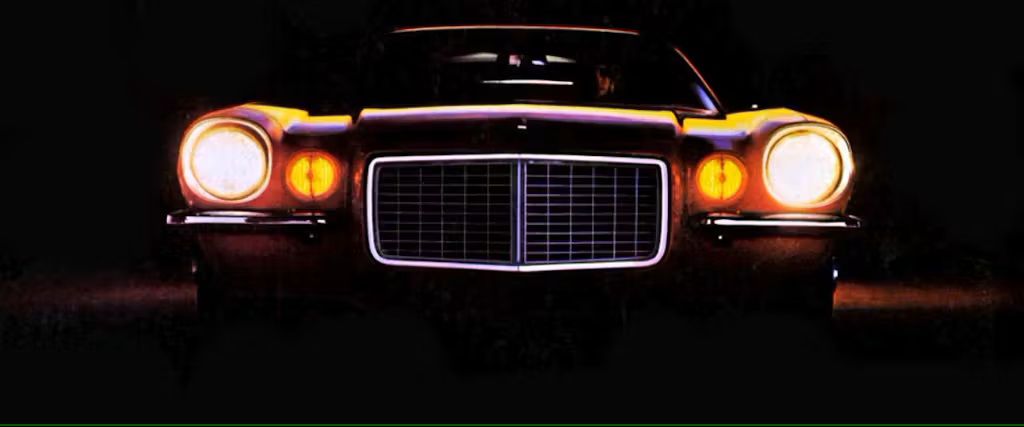
The 1970 Camaro was produced at two plants—Van Nuys, California and Norwood Assembly in Ohio. In that first year there were five engines available: At the base level was the 155hp Turbo Thrift 250-cubic inch inline six cylinder. Oddly, Chevrolet referred to the 307-cubic inch V-8 and all three of the variations of 350-cubic inch V-8 as “Turbo Fire.” The 307 delivered 200 hp, while the 350s offered 250 hp with a two-barrel, 300hp (L48) and 360hp (the LT1 in the Z28), both with four-barrel carburetors. At the top of the ladder were two versions of the Turbo Jet 396-cubic inch V-8, producing either 350 or 375 horsepower.
Four basic transmission setups were available, dependent upon the engine selected. The base was a three-speed manual, which was standard with the six-cylinder and the 307 V-8. The six-cylinder and the smaller V-8 were also available with the Powerglide two-speed automatic, while the 307 and 350 V-8s could also be ordered with the TH350 three-speed automatic. The 350s and the 396s could be had with Muncie four-speed manuals, and if you wanted an auto with your big block, a beefier TH400 three-speed would be fitted.
For the first time, the Z28 could be had with an automatic. You could also get two different low gears (a 2.52:1 and a 2.20:1) in the Z28’s four-speed manual, along with your choice of a 3.73:1 or 4.10:1 rear end. This choice of rear gears were available on big block cars, too, while lesser-engined cars based their gear sets on transmission choice.
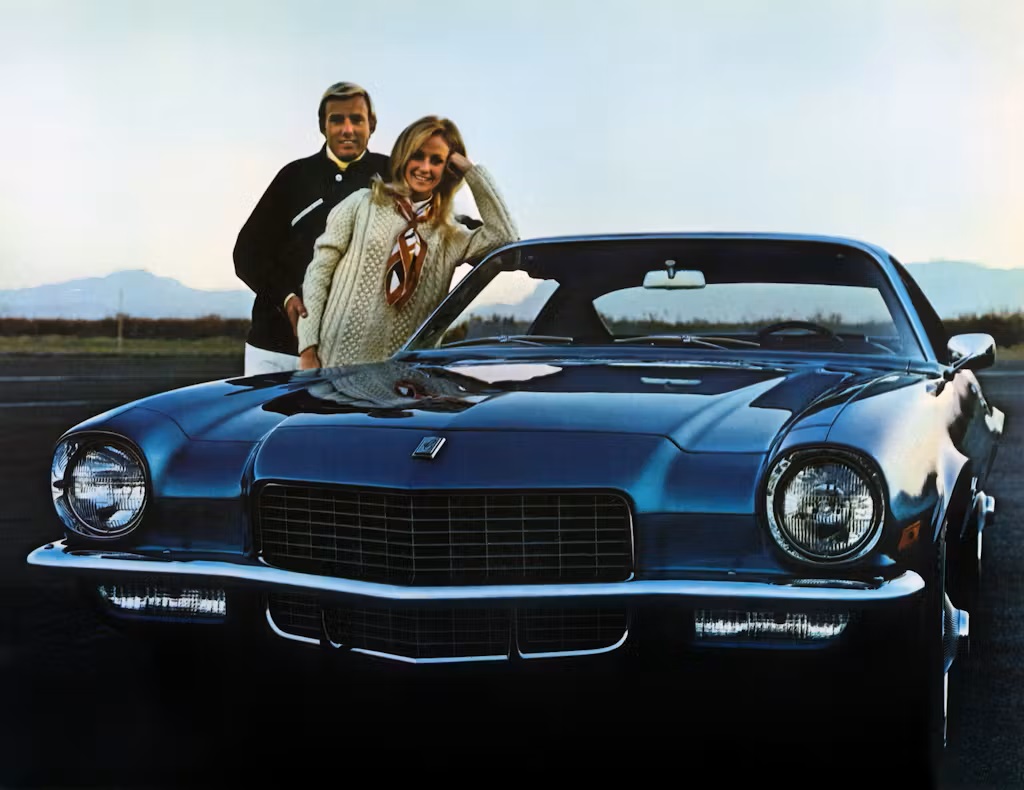
Chevrolet offered five basic trim levels in 1970: A base car identified as “Standard” in the order guide. The “Style Trim” (RPO Z21) included parking lamps mounted in the front valence, bright hood trim, body-color inserts on the door handles, and bright “Dual Concentric” rings on the taillamps. Rally Sport (RPO Z22) included Rally Sport emblems, the iconic split front bumpers and the valence-mounted parking lights. The SS (RPO Z27) came through with a standard 350-cu.in. V-8 with a four-barrel and dual exhaust, power disc brakes, hood insulation, and a black grille and rear valence panel, plus 7-inch wide Rally wheels. The optional 396 also gave the suspension a boost with a rear stabilizer bar.
At the top of the food chain was the Z28, which featured the standard 360-horse LT1 V-8. With 11.0:1 compression, four bolt main bearings, a unique cam, mechanical lifters and a four-barrel, extruded aluminum pistons, bigger valves, and a thermo-modulated fan, and other tweaks, this engine was among the most revered small blocks that Chevy produced. The Z28 also provided higher rate springs and shocks, a front and rear stabilizer bar and a quick-ratio steering box. On the outside, the Z28 received a rear deck spoiler, stripe kit, and gray-painted Z28 wheels with F60x15 white letter Goodyear Polyglas GTs.

There’s a lot of confusion about what constitutes a Rally Sport, in large part because that trim could be applied to anything from Z28s all the way down to six-cylinder cars. The only way to fully identify whether a car is an RS—five decades after it was produced—is to find code Z22 in the build sheet. It’s more than just the split bumpers, too, and buyers should note that people have been adding split bumpers onto standard noses almost since the get-go. True RS cars will also feature Hide-A-Way wipers (RPO C24) as well as the contents of the Z21 Style Trim Group. On SS and Z28 trims with the RS option, the only obvious callout will be the RS emblem on the steering wheel.
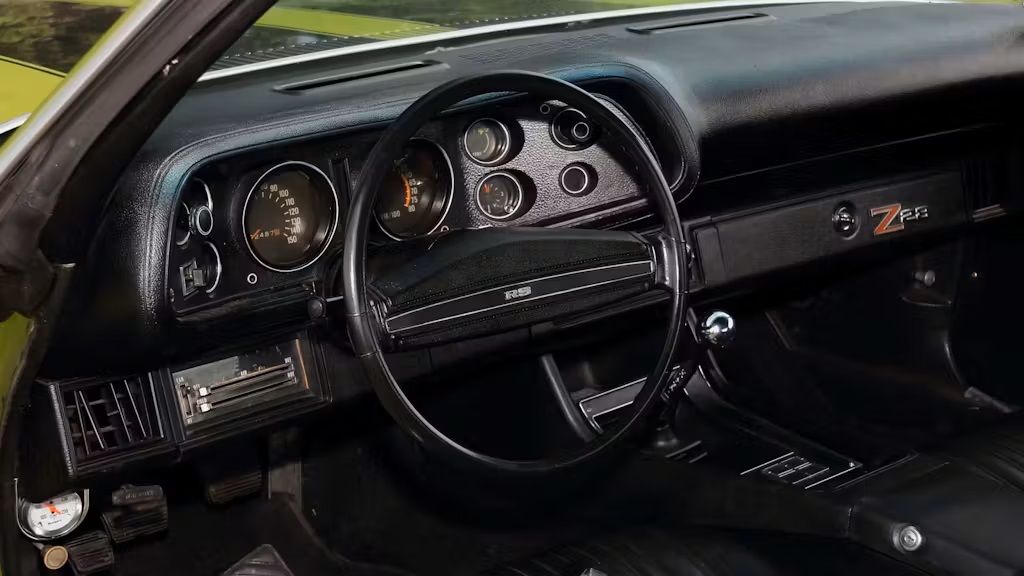
Inside, the standard car was a lot more stripped than popular imagination remembers. The floor console was an option, for example. It’s always a treat to run across a bare-bones base car with a floor shifted three-speed and no console. Interior packages included the Z23 Special Interior Group (additional instrument cluster lighting and wood-grained accents on the instrument cluster and steering wheel) and the Z87 Custom Interior (everything in Z23 plus deluxe seats in either cloth or vinyl, a glovebox light, additional instrument cluster lighting; a luggage compartment mat and engine compartment, hood, and interior insulation.)
Standalone options ranged in the dozens from air conditioning—though not on the Z28—to a forced air rear window defogger. Major option groups included ZP5 (Appearance Guard Group—door edge guards and front and rear floor mats), U14 (the Instrument Panel Gage Package that came with temp and voltage gauges, plus a clock and tachometer), and ZQ2 (Operating Convenience Group: a clock, sport mirrors and the rear defogger).
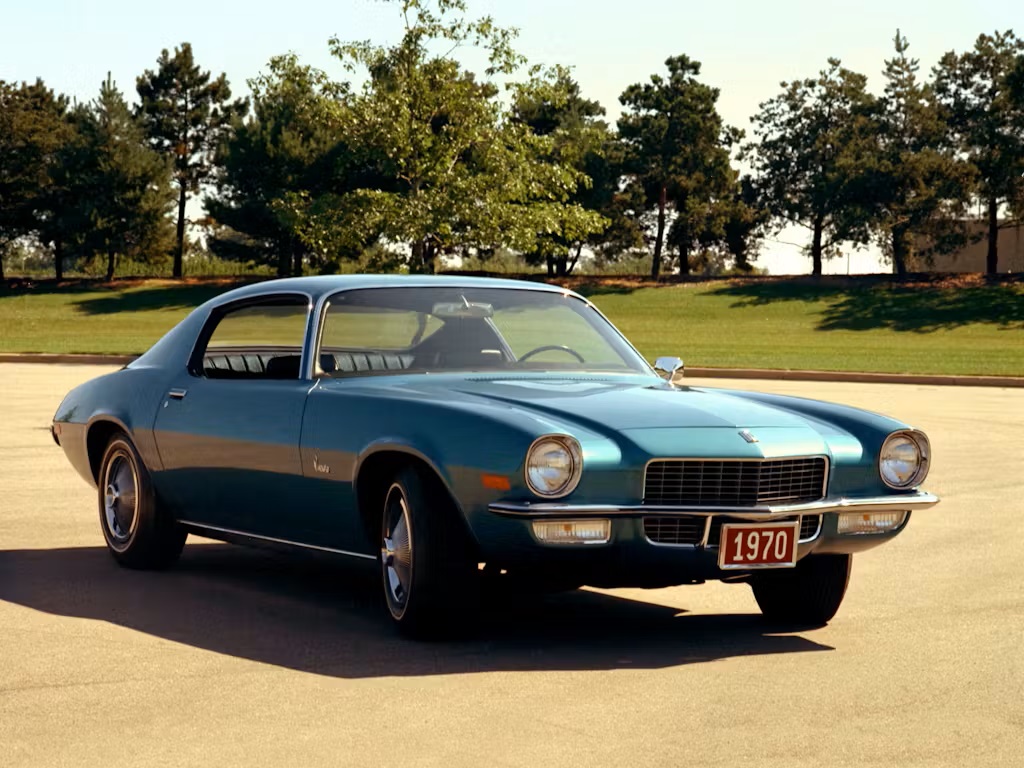
A few minor notes: 1970 was the only year the second-generation Camaro was available with the “Camaro by Chevrolet” emblem on the rear decklid. The side marker lights on a 1970 Camaro also don’t flash with the turn indicators, a one-off anomaly for that year.
There were 15 color options in 1970, with three tones of vinyl top, and five interior colors in total, three of which were available in Knit Vinyl and Pattern Cloth. The vast majority of the 124,901 Camaros produced in 1970 featured a V-8: Just 12,578 featured the 250-cu.in. six-cylinder, making these cars pretty thin on the ground in 2023.
1971

1971 was a pivotal year for performance, or more specifically, the lack thereof—GM lowered the compression ratios of all of its engines, and dropped its most potent 396 from the engine lineup.
The 250-cubic inch six and 307-cubic inch V-8 were identical in performance to 1970. The two-barrel-equipped 350-cubic inch engine dropped to 245hp from 250hp. But the big drop was for the four-barrel 350 (270hp from 300hp in 1970), the four-barrel 350 with dual exhaust in the Z28 (330hp from 360 the prior year) and the 396 (now marketed with its actual displacement of 402 cubic inches) sat at an even 300 horses.
The 1971 grille was the identical tight rectangular pattern of the 1970, and unique to those two years of Camaro.
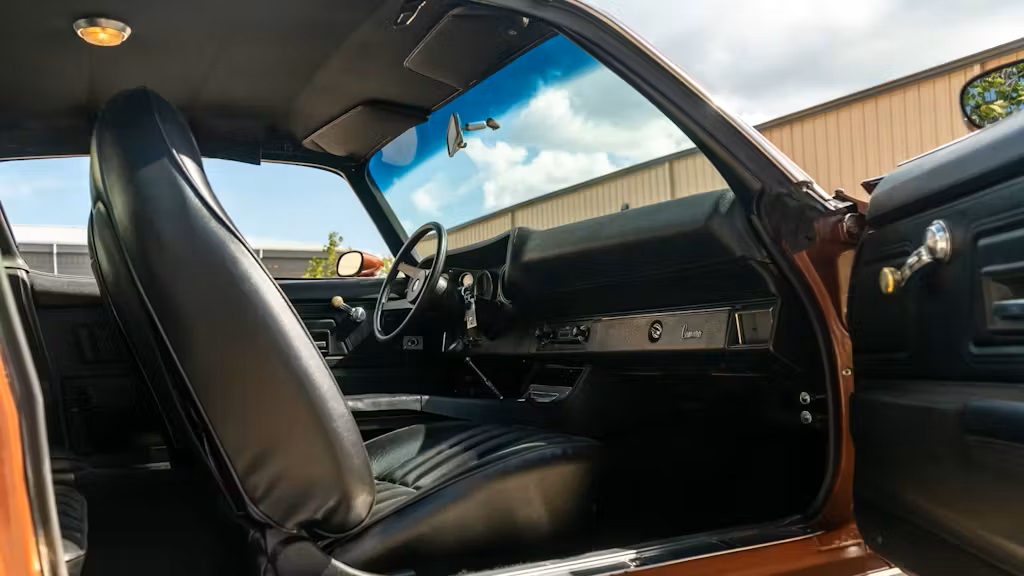
Inside, there were further changes. 1971 debuted high-back bucket seats for all Camaro models rather than low-back buckets with a separate headrest. That high-back design would continue for the remained of the second-gen’s run. And for the first time, 1971 Camaro models featured a pictograph on the smaller rubberized headlamp switch, replacing a larger chrome pull knob from 1970. The two-spoke base steering wheel is slightly different in 1971, more of a rectangular shape than 1970’s somewhat triangular design. The four-spoke wheel (RPO NK4) was an option that would eventually become standard the following year.
15 colors were available, with four vinyl top options and five interior colors. In 1971, Chevrolet produced a total of 114,630 Camaros, with about 90 percent of that production allotted to V-8s, and just 11,178 six-cylinders.
1972

The order guide in 1972 looks different, and a lot easier to comprehend. The basic difference is down to “6-Cylinder Model” with the 250-cu.in. inline six, and for another $95, the “8-Cylinder Model” with the 307-cu.in. V-8, making it absolutely clear why V-8-powered Camaros made up most of the production in any given year.
Major options continued to include the Z27 Camaro SS (with the L48 350 or with the optional LS3 402); Z23 Rally Sport (still available on everything, but deleting RS emblems on Z28 and SS); Z21 Style Trim; and Z28 Special Performance Package. All of the engines were rated for SAE NET HP in 1972, showing a significant drop from 1971. The 250-cubic inch six was rated at 110hp, the 307 V-8 at 130hp, the L65 350 V-8 at 165hp, the L48 350 at 200hp, the Z28 350 at 255hp, and the 402-cu.in. V-8 at 240hp. Transmission offerings remained the same.
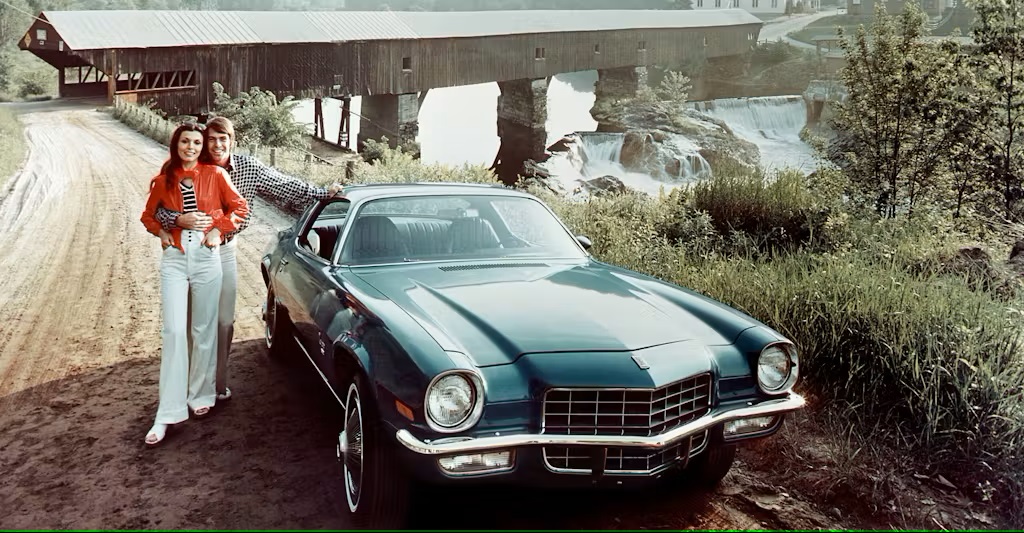
The big exterior change for 1972 was the larger grille pattern, which the 1972 model year Camaro shares with ’73. But it’s the only year that the Camaro has this grille pattern without the underlying larger, stronger bumper supports. Besides that grille, the exterior largely stayed the same, though lots of changes were occurring inside. The steering wheel went to the four-spoke urethane NK4 sport wheel that became synonymous with the Camaro until 1981. Three-point seatbelts became standard for the two front passengers. The door panels underwent a style revision, with map pockets and a change holder. Speedometers dropped to a 130-mph max, down from 150 in the first two years. In prior years, four-speed-equipped Camaros used a Hurst shifter, but that was eliminated for 1972.
In previous years, Z21 (Style Trim) was included in the Z23 Rally Sport package, but in 1972, the packages were independent, meaning you could buy a car that was Rally Sport equipped, but not have bright exterior trim. It’s important to note that prior to the 1972 model year, the engine code was not part of the VIN. That changed in 1972, with the fifth digit of the VIN signifying the engine:
- D = 250ci
- F = 307ci
- H = 350ci
- K = 350ci (SS)
- L = 350ci (Z28)
- U = 396ci (SS)
Fifteen colors were available in 1972, with another five vinyl top hues. Six interior colors were available with two reserved for vinyl only. This was a grim year for Camaro production, thanks to a strike. Just 68,671 Camaros were produced, with only 4,821 six-cylinders, and the balance in V-8 production.
1973

This was a big year in second-generation history, for a number of reasons. First off, it’s the last year for the original flat-faced design. This marks the last year for the split bumper, and the only year the split bumpers have additional reinforcement beneath, specifically to allow these cars to pass the 2.5-mph federally mandated bumper crash test.
On the performance side … well, there wasn’t a performance side. 1972 was the last year for an SS, and with it went the big block. From here through the end of second-gen production, the Camaro would have a six-cylinder as the base engine, and small block V-8s as options. Power ratings fell again: To 100hp for the six, 115hp for the 307-cu.in. V-8, 145hp for the two-barrel L65 350, 175hp for the four-barrel L48 350, and 245hp for the Z28 350. The transmission offerings also changed, with the deletion of the Powerglide. The only automatic available henceforth would be a Turbo Hydra-Matic 350.
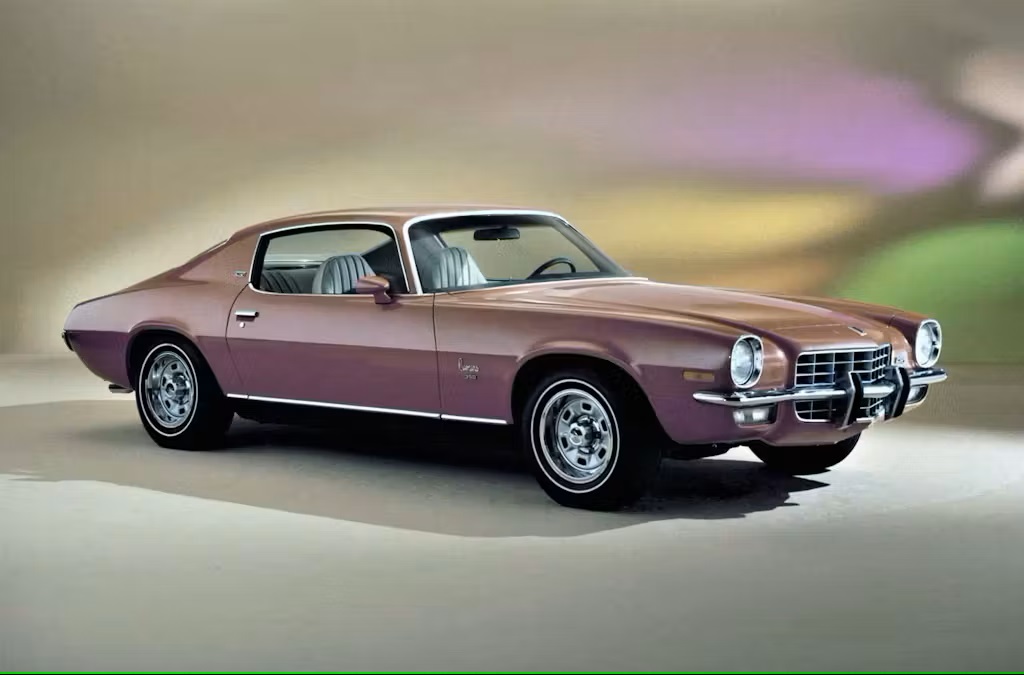
In the SS’s place was the Type LT—ostensibly standing for “Luxury Touring,” a fact made obvious by the full foam front and rear seats designed to give “superb riding comfort” and “firm support.” Seats could be covered in either vinyl or cloth. The “deep twist” carpet was supposed to be more luxurious, and could be ordered in accent colors depending on the upholstery color. Standard on Type LT was the Décor/Quiet Sound Group, which included sound deadening on the floor, cowl-to-fender seals, a headliner insulating pad, and full hood insulation, along with woodgrain on the door panels. The LT got special emblems on the decklid and sail panels outside.

Turbine wheels were available for the first time in 1973 on every trim except Z28, and the full wheel covers were revised. The bad news of the Z28 losing its mechanical lifters was salved slightly by the Z28 finally being offered with air conditioning. Throughout the lineup, the console and automatic transmission shifter were revised to a single ratchet style shifter, rather than the basket-handle shifter of the first few years. Inside, all Camaros had a mandated seat belt warning buzzer. In the trunk, a space saver spare debuted.
16 colors provided the most extensive palette to date, and seven vinyl top colors expanded the range as well. Five colors were available for the interior, but only two were available in cloth trim. Production picked up nearly a third to 96,751, with 93,137 of those cars shipped with one of the V-8s.
1974
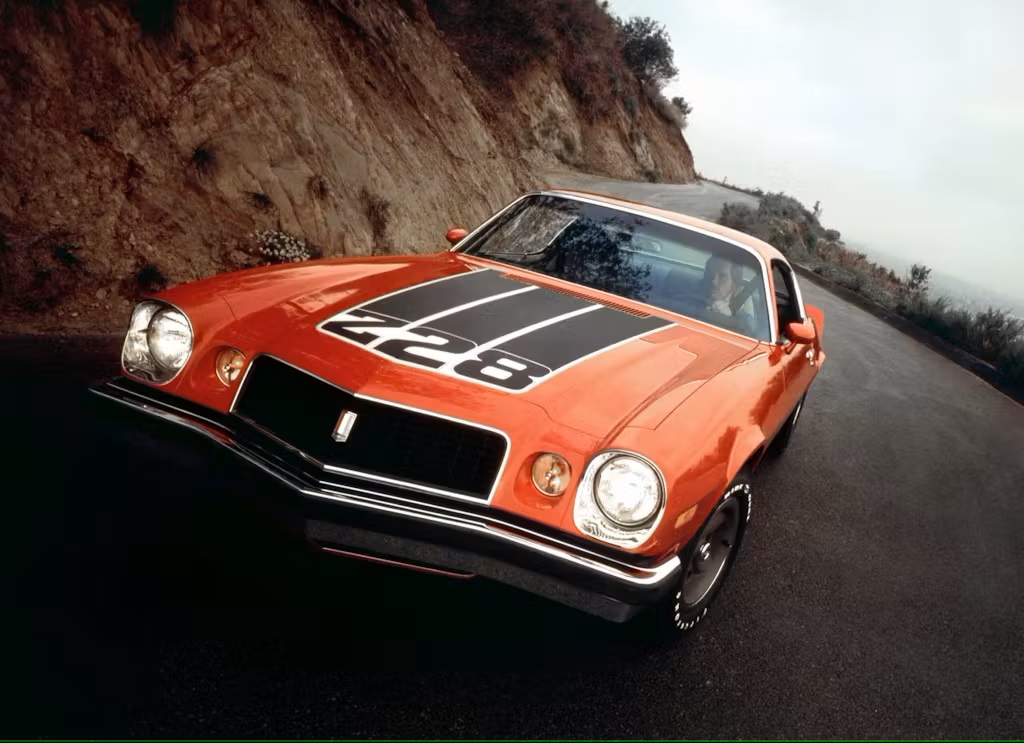
Federal bumper standards forced a major facelift for the 1974 Camaro. Look around at how other makes and models had their faces altered during the same time period, and you realize just how successfully Chevrolet designers were able to integrate the bumpers into the Camaro’s overall aesthetic.
Along with the new aluminum bumper up front came an all-new fiberglass nose with deep sugar-scoop headlamp buckets, and turn signals set between the grille and the headlamps. The rear quarter and rear valence was redesigned to add a larger aluminum bumper to the rear as well, which also integrated wedge-style wraparound taillights with full red lenses. Front and rear bumpers had jack slots, so the bumper jack was revised.

The delightful baby moon center caps of the first three years gave way to the same aluminum center caps from the Nova. Radial tires became an option for the first time. The Z28 got wild new graphics for ’74, just in time for the designation to disappear for a few years.
Changes were afoot inside, too, some subtle, some not. A retractable, inertia reel shoulder belt became standard, and an AM/FM stereo was on the option list. Gone as quickly as it arrived was a seatbelt interlock that prevented the car from starting if the seat belts weren’t engaged.
Mechanically, there were a few revisions, too: Power steering became standard on all V-8-powered Camaros. The fuel tank increased from 18 gallons to 21. The Z28 got an HEI electronic ignition, which would eventually make its way to all the cars. The 307 disappeared in favor of the two-barrel 350. 16 colors made up the paint options, along with the widest color range of vinyl tops to date at 10 colors. Nine interior colors were available, along with some great two-tone check patterns. Production skyrocketed in 1974 to 151,008, with 128,798 cars shipped with V-8s and the balance 250-cubic in. sixes.
1975

While the big changes all occurred in the 1974 model year, there was more in store for 1975, and most of it wasn’t good. The Z28 was gone, though the Rally Sport re-emerged toward the end of the year as a paint and trim package. The familiar “Camaro” cursive script was still on the glovebox lid, but the front fenders received a block script in all caps. The rear window was also redesigned to mirror the wraparound look of the tail lamps, and to provide more visibility to the rear. The tricolor emblem in the grille on the 1974 model year moved up to an escutcheon on the fiberglass nose.
Inside, power locks were available for the first time, along with a new cruise control option. The Sports Décor package (Z08) showed up briefly, including body-colored sport mirrors, a body-colored insert on the door handles, and body-colored appliqué on the bumpers. That package disappeared halfway through the year, so it’s a relatively rare sight nowadays. The Type LT featured bird’s eye maple trim inside, versus the previous year’s meridian walnut. Even the handful of people who bought sixes could get air conditioning in 1975. According to the order guide for 1975, for the first time, leather seating was available in either Dark Saddle or Dark Oxblood. That option disappears in 1976 and wouldn’t return in the second generation.
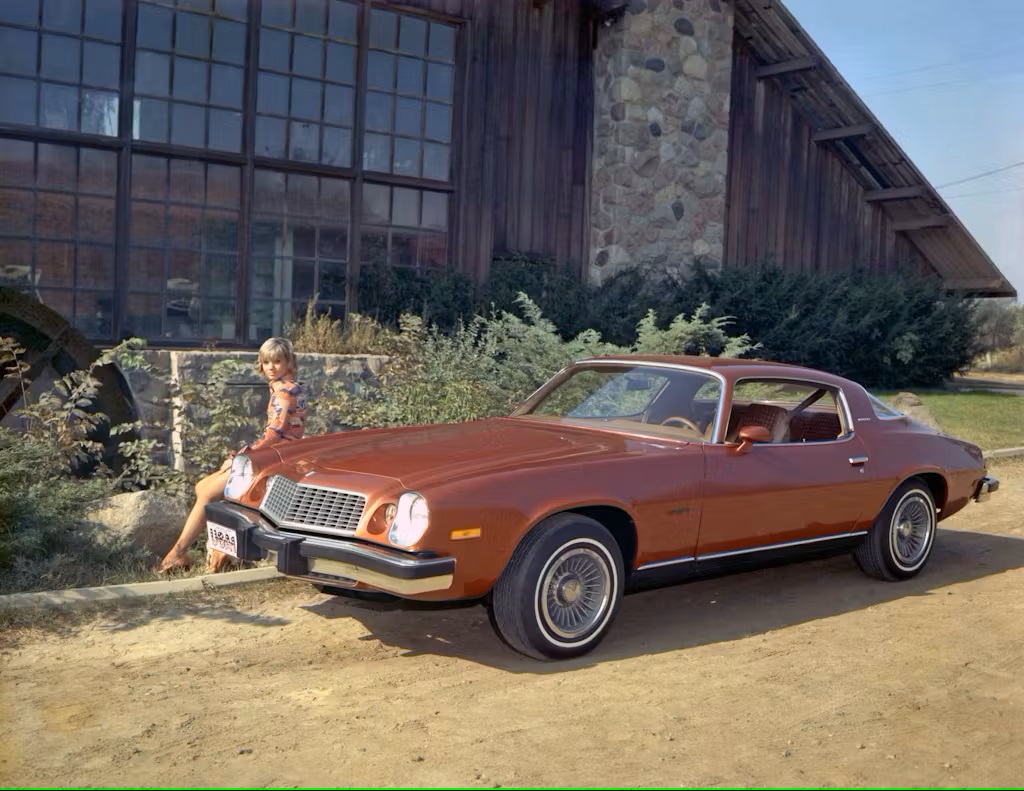
There were also a few mechanical changes. The big one was the addition of the catalytic converter, which required the modification of the passenger side floor. All V-8 cars received twin exhaust outlets. HEI became standard on all engines, including the six. Rear brake drums were finned for better cooling.
16 colors were available, along with nine vinyl top choices. Interior colors were limited to just five. Production held steady in 1975 to 145,770 units, with a growing percentage of six-cylinder cars at 29,749, and 116,021 V-8s.
1976
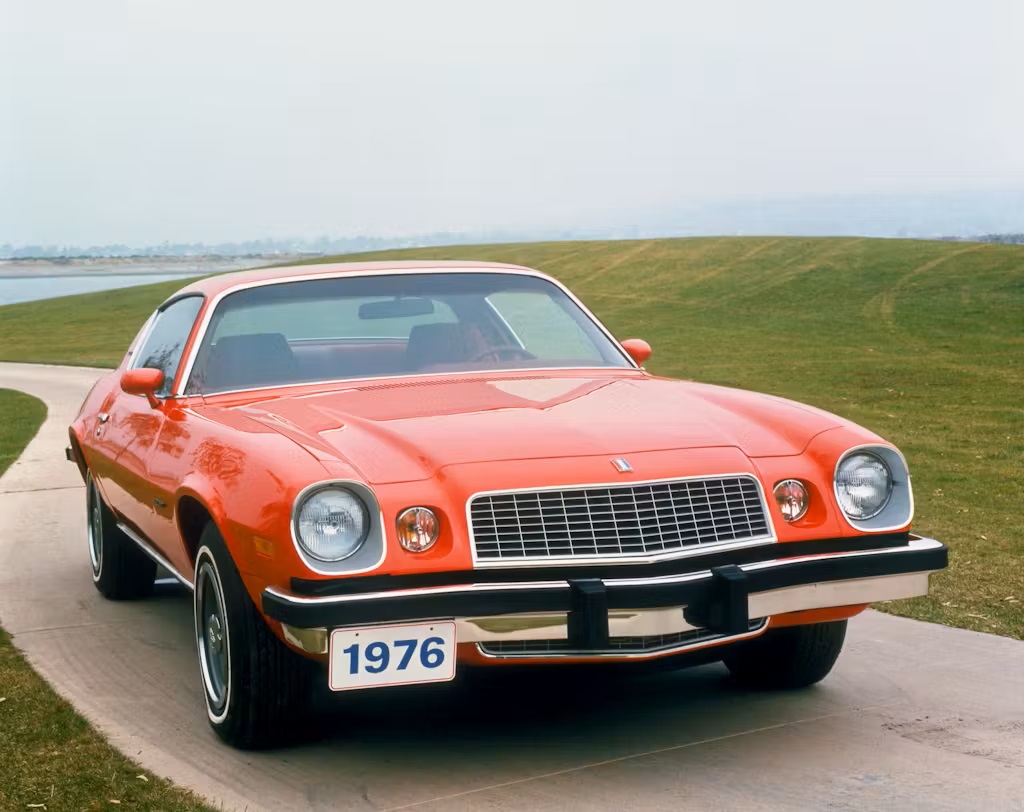
It seems hard to distinguish the differences between a 1975 and 1976 Camaro, though there were a number of minor trim revisions, as well as some significant mechanical changes.
On the Type LT, the rear valence panel under the decklid received a smart brushed aluminum cover that set the entire back of the car off nicely.

Outside, a new Landau top trim was available. It’s essentially a reverse landau top from what you might be familiar with on a Colonnade body, where the vinyl is only over the front passengers, rather than wrapping around the rear window and quarter. This replaced the full vinyl top available up to this point. Custom-styled urethane and alloy wheels were also options for the first time in 1976.
Upholstery revisions were again in the mix, with new sport cloth-and-vinyl trim patterns. The instrument panel trim shifted from interior color to a tan simulated leather, which made the black-faced gauges seem to leap out of the dash. Optional gauge packages included a voltmeter rather than the old ammeter.
Mechanically, 1975 introduced the 305-cubic inch V-8 as the middle engine in the lineup. The 145-hp two-barrel split the difference between the 105 hp inline six and the 165hp of the 350. Power-assisted brakes were now standard, and the braking system received minor updates.
There were 14 colors for 1976, with another seven vinyl top colors. Five interior colors were available. Production numbers were way up again for 1976, with 182,959 total. That number is made up of an increasing percentage of six cylinder cars with 38,047, along with 144,912 V-8s.
1977
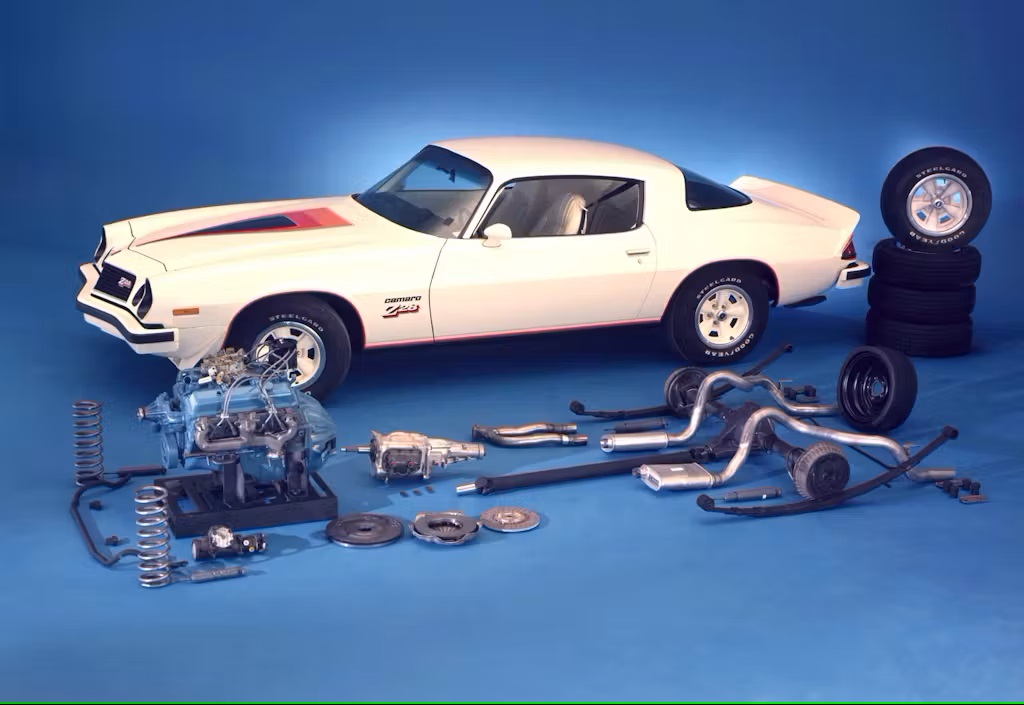
Camaro news for 1977 was big, if only for the return of the Z28. Tom Zimmer—the Camaro’s Chief Engineer—demanded it, reportedly after seeing the Pontiac Trans Am’s sales numbers take off.
The Z28 debuted at the Daytona Motor Speedway in February that year. While it wasn’t exactly the car that Pontiac delivered, it did pretty well for itself, with a 185-horse 350 fitted with a Rochester four-barrel carburetor. The exhaust went through a single cat, but split into dual resonators and tailpipes with no mufflers. The standard transmission was a Borg-Warner four-speed with a 2.64:1 low gear. The stick wasn’t available in California, which only got the three-speed Turbo Hydra-Matic, though the shift points were revised upward.
The Z28 emphasized handling over straight line performance, with revised 365-lb springs and a 1.2-inch stabilizer bar up front. Springs in the rear were 127-lb. versus the standard 89 to 99 pound springs in lesser Camaro trims. The rear stabilizer bar trimmed back a bit to .55 inches versus .69 inches, and the rear springs benefitted from higher durometer rubber shackle bushings. The 15×7 Z28 steel wheels returned, though they were painted body color instead of gray as in previous years.

The exterior package included Z28-specific decals on the hood, front fenders, front and rear spoilers, wheel wells, rocker panels, and door-handle inserts. The bumpers—the same bumpers as any other Camaro in 1977—were body color. Headlight and tail light bezels and window trim were black anodized, and the rear trunk panel, rocker panel and parking light buckets were painted black to match. Front and rear spoilers were standard and the Z28 received the full U14 gauge package. And for the first time, the Z28 received a unique steering wheel with faux rope “whipping” around the rim. That steering wheel would remain a Z28 component until the last model year of the second generation.
Only two minor changes occurred on the balance of the Camaro lineup: intermittent wipers were optional for the first time, and the four-speed transmission moved the location of reverse to far left and down. Colors grew a bit more limited to 13 in 1977, and you had more than half as many vinyl top colors to choose from, too. Inside, though, just four colors were available. Boosted by the popularity of the mid-year Z28, Camaro numbers exploded to 218,853, outselling the Ford Mustang for the first time, and including 14,349 Z28s. The total breakdown includes 31,389 inline sixes and 187,464 V-8s.
1978
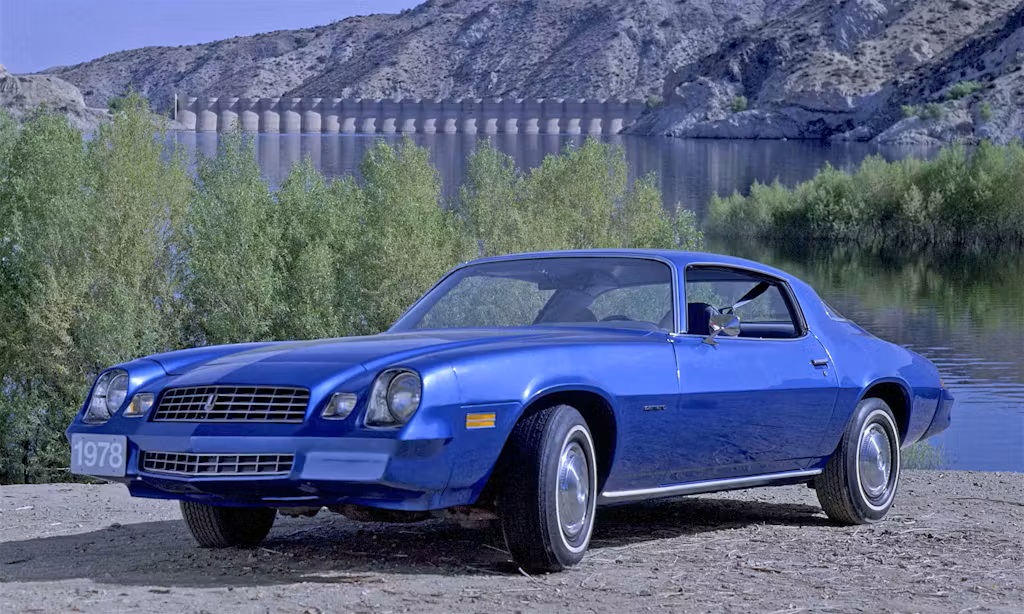
A whole range of exterior changes occurred in 1978, largely centered around the bumpers. The aluminum bumpers that arrived in 1974 were reportedly supposed to be replaced with urethane bumper covers by 1976, but that change was delayed for two long years. When they finally came around, however, they gave the Camaro a significant refresh that helped propel the car to fresh sales highs.
Front and rear fascias were both revised, and hid impact-absorbing construction designed to withstand a five-mph impact without damage. The headlamp and turn indicator buckets were more squared off than previous years, and they were smooth chrome in all but the Z28. Prior years had a pebbled finish that didn’t fare well in the weather. The Camaro emblem once again moved to the middle of the grille. Tail lamps were revised to a more geometric pattern, with amber turn signals split by a fuel door in the rear panel, instead of behind the license plate. The license plate mount itself moved from the rear panel down into a molded section of the bumper.

1978 also marked the first year for the T-Top option. Interestingly, the brochure shows the option, but the available order guide from October of 1977 doesn’t. The Rally Sport also re-emerged as a separate trim level rather than an RPO package.
There were some mechanical changes, as well. The 305 received the four-speed manual as the standard transmission, and all but the Z28 had taller rear axle ratios to help fuel economy. Lower control arms received heftier bracing for improved chassis stiffness, and redesigned rear spring shackles improved stability.
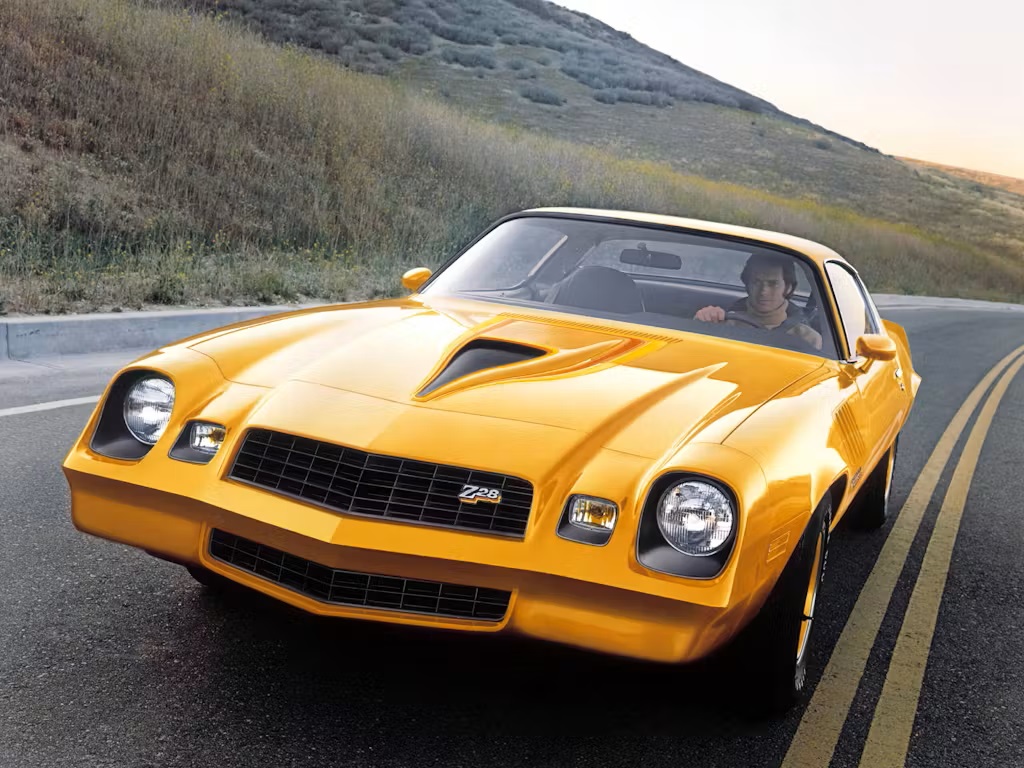
The color palette shrunk again to nine choices, with nearly as many vinyl top colors to choose from. Upholstery color choices grew to six. Production numbers again surpassed anything previously seen for the Camaro, with an astounding 272,631 total, including 36,982 six-cylinders and 235,649 V-8s.
1979
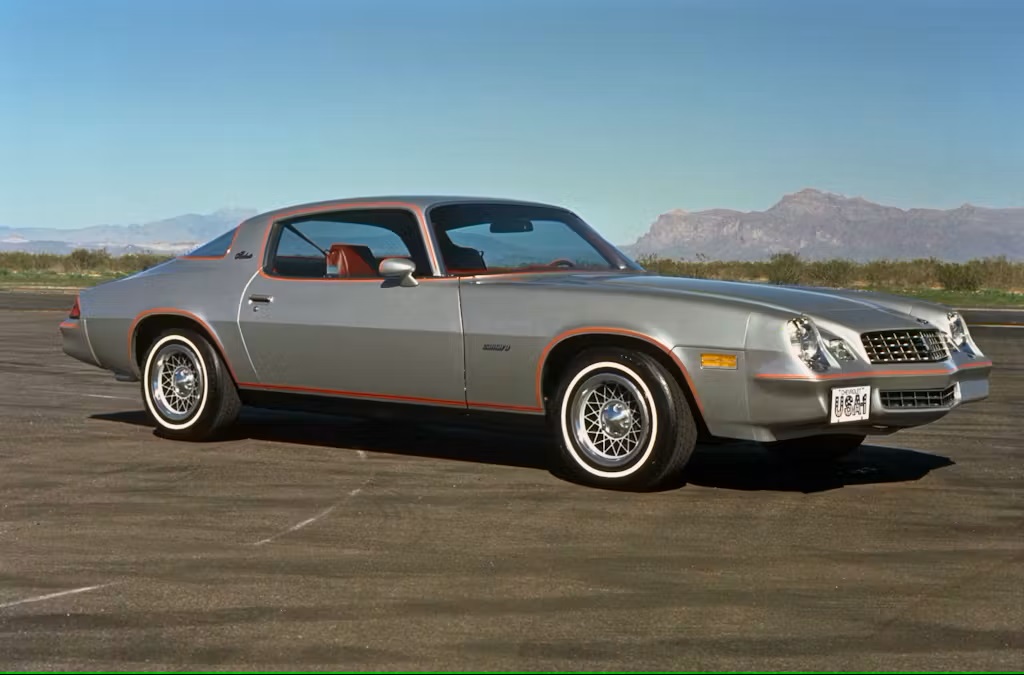
1979 brought another year of growth for the Camaro and the all-time sales record for the model. The biggest revision was the trim name shift from the Type LT to the Berlinetta, which included custom interior, bright upper and lower grille, bright windshield and rear window moldings, a dual pin stripe, body color sport mirrors, argent appliqué on rear panel, specific trim and either polycast wheels or color-keyed aluminum wheels. The Berlinetta also received Amberlite insulation blankets in the doors, rear quarters, roof/sail panels, behind the rear seat, under the package tray and under the carpeting. Dual horns and the full gauge package were also standard equipment.

Inside, all Camaros got new brushed aluminum-style instrument panel trim, and the optional forced air rear defroster gave way to a heated backlight.
Color options expanded to 11 in 1979, along with seven vinyl top choices. Six upholstery colors were available. It was the best-ever year for the Camaro with 282,571 produced, including 21,913 six-cylinders and 260,658 V-8s. Despite the economy, rampant interest rates and rising fuel costs, the Z28 alone represented 84,877 units sold.
1980

The penultimate year for the second-generation Camaro represented a lot of change for the car, some good, some not so much. For the first time ever, the base Camaro wouldn’t rely on the inline six that had powered Chevrolet vehicles since 1962. In its stead were two V-6s. California got an even-fire 231-cubic inch V-6 with internal balancing that would eventually go on to power the lion’s share of GM products for the next 20 years. The other 49 states got an odd-fire 229-cubic inch six for 1980.
Also available—and universally despised—was a 49-state L39 267-cubic inch V-8 good for 120 hp and 215 lb-ft. of torque.
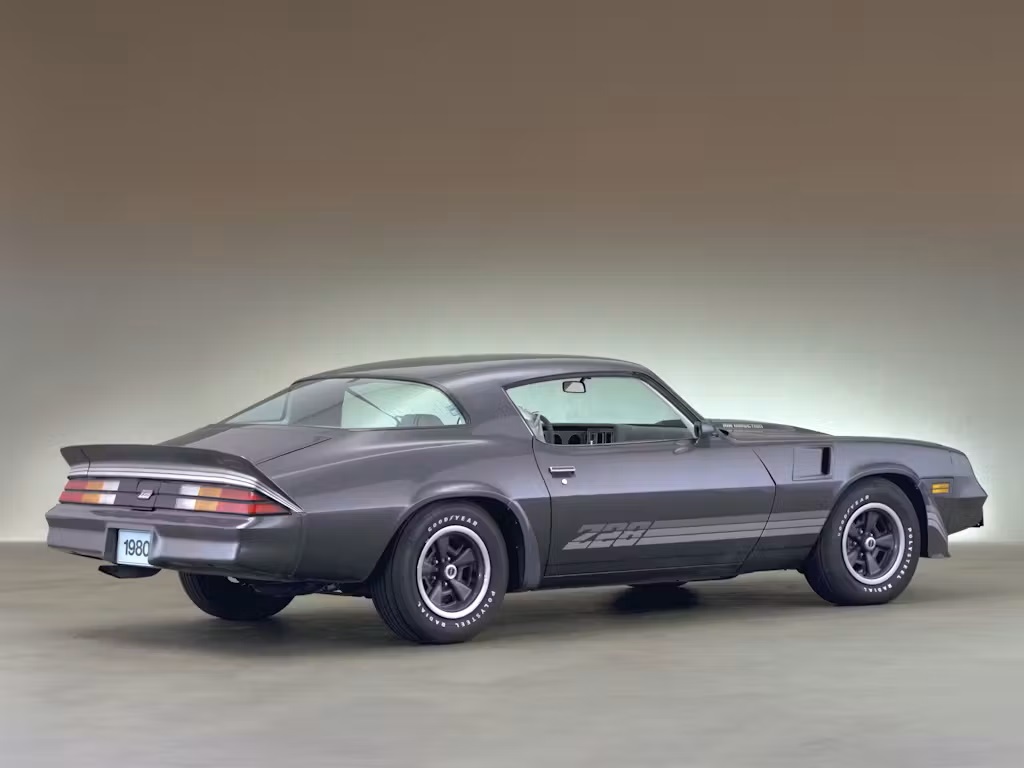
The Z28 got ever-more menacing three-bar, tri-color graphics in 1980, and even slightly more horsepower, too, at 190hp, provided you didn’t live in California. Z28s sold there were limited to a 305 V-8 and a TH350. It also got the nifty Air Induction hood for the first time, with a solenoid-fired flapper that snapped open at wide-open throttle, perhaps one of the coolest gimmicks to come out of the 1980 model year.
Polycast wheels finally bowed out for this model year, replaced by polished wheel covers for the Berlinetta.
The disco era may have finally reached its conclusion, signified by the deletion of the vinyl top option for 1980. Color choice exploded to 14 selections, while interior colors were limited to five. Production dropped significantly in 1980, down to 152,005 units. The available V-6 was a smash, selling 51,104 units—the best ever showing for a six cylinder. V-8s totaled 100,901 units.
1981

In its final year, the bulk of the Camaro lineup was a carryover from the 1980 model year, but there are still changes to talk about.
The biggest revision was the standard Computer Command Control emissions system, which took up some valuable real estate in that year’s sales brochure. It was an early ECU that not only monitors fuel mixture, throttle position and 02 emissions, but transmission performance as well, since the computer controlled the new lockup torque converter. It’s also notable for the birth of the Check Engine Light for the Camaro.
For 1981, the Rally Sport fell out of the lineup. Like all cars, Camaros in 1981 featured a 17-digit VIN. Power brakes were a standard feature for the first time, as was a space saver spare. Halogen headlamps became optional, and there were 13 colors available in the final year, with six interior color choices. While a shadow of the 1979 zenith, sales were still pretty strong for 1981, with 126,139 Camaros produced. V-6 models continued to perform well at 52,004 units, while V-8 models dropped to 74,135, including 43,272 Z28s.
Report by Craig Fitzgerald










